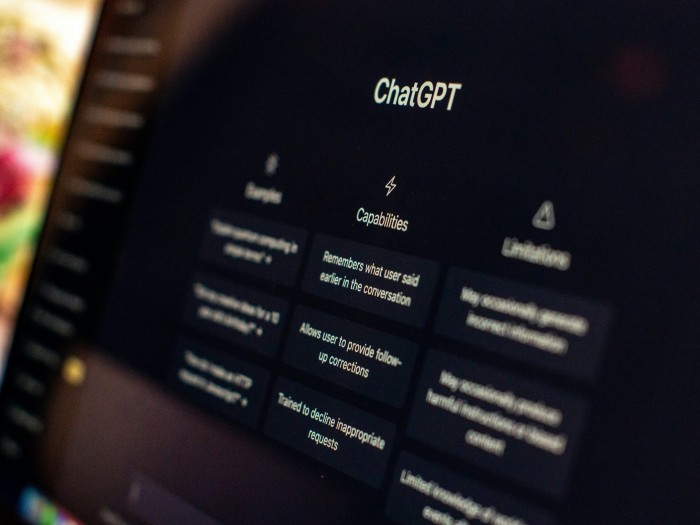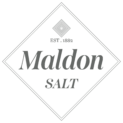Whatever your personal feelings about the technology, GenAI is here to stay.
Globally, we’ve seen organisations across multiple sectors leverage it to cut admin, streamline workflows and boost productivity.
Sounds great, but what specific uses does GenAI represent for SMEs like yours?
If you rely on written copy, you’ve likely dabbled with OpenAI’s chatbot – ChatGPT.
But did you know you create your own personalised version of ChatGPT’s model?
Custom GPTs are affordable, accessible AI copywriting tools. More personalised than the average chatbot, they can be configured to work with your unique brand materials and reference data. Stuff that’s not included in the base LLM.
This allows them to mimic your tone of voice and refer to your internal data – creating copy that feels like it was drafted by your team.
Here, we’ll look at everything businesses need to know about custom GPTs.

If you’ve used ChatGPT, you’re already halfway there.
A GPT is a Generative Pre-trained Transformer – a type of AI model trained on huge amounts of data to generate text, images, code and more.
A custom GPT is a version tailored specifically to your business.
It augments its existing knowledge base with your own files. These may include brand guidelines, handbooks or blog posts. It uses these to generate content that fits your tone, reflects your values, and references your internal data.
At the time of writing, each custom GPT can hold up to 20 documents and 2,000 words of direct instructions.
Custom GPTs are refer to your own materials, so they’re more relevant, accurate and brand-aligned.
A custom GPT can benefit your brand in a number of ways.
As your business grows, custom GPTS can prevent your operational costs from growing with it. This enhances scalability without compromising your brand.
Custom GPTs can:
This saves businesses money by reducing the need to increase headcount in line with business growth.
What’s more, if you have ChatGPT Plus (currently £20 a month inc. VAT), you can create as many custom GPTs as you like without additional charges.
As well as reducing operational costs, custom GPTs can also help businesses save time. They can lighten teams’ admin loads – leaving them with more time and energy for the work they enjoy.
With custom GPTs, teams can easily redraft or personalise emails, ad copy and social media posts. They can help automate employee onboarding when they ingest your company handbooks and operational manuals.
This allows GPTs to act as self-service resources for new hires.
As well as reducing overheads, custom GPTs can also help to increase revenues.
They can:
Custom GPTs can be configured using your company’s unique data.
This may include:
All this allows them to generate copy that feels authentic to your brand, and provides value for customers.
Whatever your field, there’s a good chance you can integrate custom GPTs into your operations.
Let’s explore some examples:
Custom GPTs are configured using internal data like support documents, product guides or FAQs. Therefore, they know your business, your products and your customers’ needs better than “out of the box” chatbots.
By automating administrative processes, custom GPTs can improve the customer experience, providing 24/7 support. By taking on the lion’s share of entry-level enquiries, they allow client-facing staff to spend more meaningful time with customers. Resolving more disputes and delivering more value.
Supplemented with your internal materials, they become always-on resources for onboarding, troubleshooting and policy queries.
You can augment your custom GPT with:
Do your sales teams ever complain that so much of their time is spent on personal admin rather than selling?
Custom GPTs can help them automate their workflows – giving them more time to convert leads and smash their targets.
By referencing your sales communications, a custom GPT can speak with the voice of your sales team. It can help with:
By getting to know your brand’s ToV and communication style, custom GPTs can help you upscale your marketing copy.
They can help with everything from coming up with new ideas to redrafting copy to better fit its readership.
With myriad associated costs, taking on new staff is expensive, with average onboarding costs ranging from £3,600 to £5,000. By automating new hire processes, Custom GPTs can help employees hit the ground running.
By referring to company handbooks and other such resources, they can act as an interactive self-service resource for new hires.
Anything from dress codes to IT support contact details can be accessed by teams 24/7, wherever they are.
Legal and compliance concerns can be tricky for small businesses with limited resources.
While custom GPTs can help with this, it’s important to remember the risk of hallucination. This is where LLMs generate content which is inaccurate or nonsensical. They may cite studies or legal cases that don’t exist.
Nonetheless, there are several low-risk ways your business to use custom GPTs for legal support.

Custom GPTs can be set up without any coding experience. If you already have a ChatGPT Plus account, it’s also free.
Let’s take a look at how you can set one up right now.
Core behaviour refers to the way ChatGPT behaves ‘out of the box’. These behaviours can be replaced with 2,000 words of your custom instructions.
To do this:
You can add additional tools to expand your custom GPT’s abilities.
Some examples include:
It’s important to remember that even with access to your files and data, GPTs can still be prone to hallucinations and inaccuracies. All outputs should be fact checked against the files and data your custom GPT has ingested.
Like all AI technologies, GPTs are evolving at breakneck speed.
Each iteration brings a new host of capabilities. Chat GPT’s base model now includes built-in customisations, dynamic prompts and multimodal capabilities. In this context, do businesses like yours even need custom GPTs?
To use a tech analogy, nobody wants to buy a digital camera that will be superseded by the average smartphone in six months.
Opinion within the AI community is divided on this, but it’s unlikely that custom GPTs will be outpaced by ChatGPT’s standard model anytime soon.
This is because their value lies in your data. Still, there are some caveats.
A custom GPT is not a “set it and forget it” affair. In order to get the best out of your GPT, it should be constantly tweaked and retrained. Ingesting new documents and receiving more system-level directives can help your GPT to evolve.
The more of your own unique materials you can use to train your Custom GPT, the more fit for purpose it will be.
Uploading proprietary data to ChatGPT also carries security caveats.
OpenAI encrypts data in transit and at rest, for business users it also offers retention controls including a zero-data option.
However, standard accounts may allow inputs to be stored and used for model training unless opted out. Even with protections, risks remain. Data could be exposed through misconfiguration, policy loopholes or cyber attacks like prompt injections.
For sensitive or regulated information, businesses should adopt a zero-trust approach.
Limit what you upload, check contractual terms, and ensure internal governance before relying on custom GPTs.
Now you’ve created a custom GPT, it’s up and running and producing good content.
But… it still needs a little something.
That secret sauce that makes good content great.
That’s where our AI copy editing service comes in.
Working with experienced writers and editors, we provide AI-generated copy with that all-important human touch. Once you’re happy that we’ve got it just right, you can use our human-polished copy to further train your custom GPT.
Intrigued?
We can help you master the balance between quality, scalability and affordability.
So, why not give us a call?











